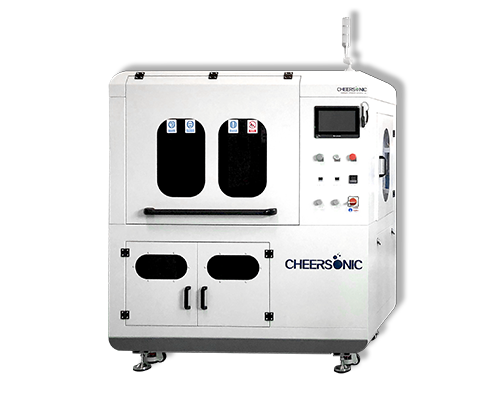Gas Sensor Classification
Gas Sensor Classification – Spraying Thin Film Polymers – Cheersonic
A gas sensor is a sensor that is used to detect the presence of a specific gas in a certain area and/or can continuously measure the concentration of a gas component. Gas sensors are commonly used in coal mines, petroleum, chemical, municipal, medical, transport and household safety and protection applications to detect the concentration or presence of combustible, flammable or toxic gases, or the consumption of oxygen, etc. Gas sensors are primarily used for the detection of a specific gas, measuring the presence or absence of the gas in the vicinity of the sensor or the amount of air in the vicinity of the sensor. For this reason, gas sensors are often indispensable in safety systems.
From the working principle and characterisation to the measurement technology, from the materials used to the manufacturing process, from the detection object to the field of application, they can all constitute independent classification criteria, giving rise to a wide range of classification systems, especially as there is currently no uniformity in the classification criteria, making it difficult to classify them in a strict and systematic manner.
1.In terms of the type of gas detected, it is usually divided into combustible gas sensors (often using catalytic combustion, infrared, thermal conductivity, semiconductor type), toxic gas sensors (generally using electrochemical, metal semi-conductor, photoionization, flame ionization type), harmful gas sensors (often using infrared, ultraviolet, etc.), oxygen (often using paramagnetic, zirconium oxide type) and other types of sensors.
2.In terms of the method of use, there are usually portable gas sensors and fixed gas sensors.
3.In terms of the method of obtaining the gas sample, they are usually divided into diffusion gas sensors (i.e. the sensor is installed directly in the environment of the measured object and the measured gas comes into direct contact with the sensor detection element by natural diffusion) and inhalation gas sensors (i.e. the gas to be measured is introduced into the sensor detection element by means of a suction pump, etc.). Depending on whether the gas to be measured is diluted or not, it can be subdivided into fully inhalable and dilute types.)
4.In terms of the composition of the gases analysed, they are usually divided into single gas sensors (which only detect specific gases) and composite gas sensors (which detect multiple gas components simultaneously).
5.According to the sensor detection principle, they are usually divided into thermal gas sensors, electrochemical gas sensors, magnetic gas sensors, optical gas sensors, semiconductor gas sensors, gas chromatography gas sensors, etc.
Ultrasonic coating systems are used to spray polymer films, conductive nanoparticles, or other functional materials used in sensor fabrication. These conductive nanocoatings are used in applications such as biometric security and medical device applications, as well as sensors designed for a variety of other applications including: temperature sensing, gas sensing, blood analysis device sensing, chemical detection, impedance measurement, and pressure or load sensing etc…
Cheersonic is the leading developer and manufacturer of ultrasonic coating systems for applying precise, thin film coatings to protect, strengthen or smooth surfaces on parts and components for the microelectronics/electronics, alternative energy, medical and industrial markets, including specialized glass applications in construction and automotive.

